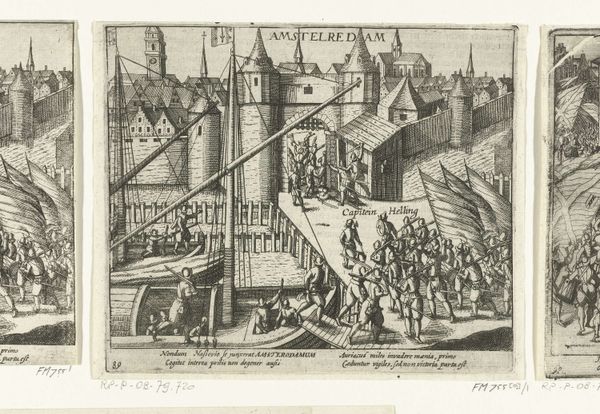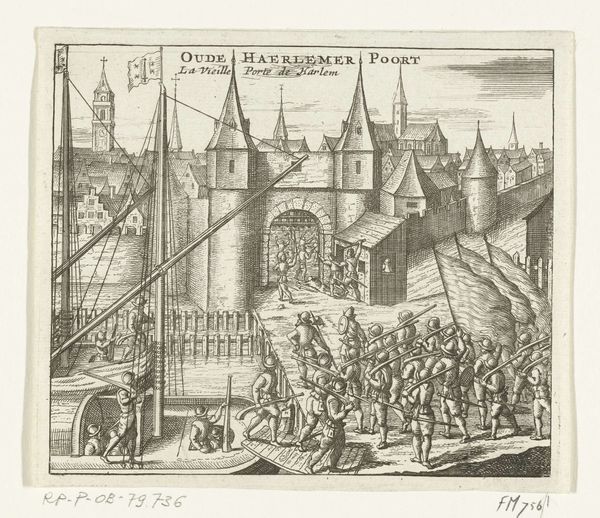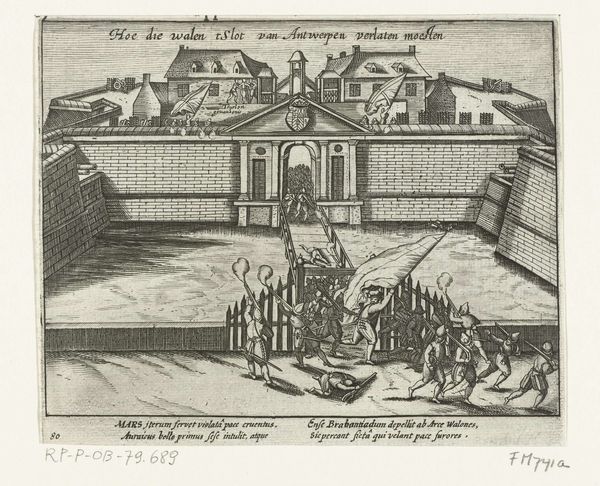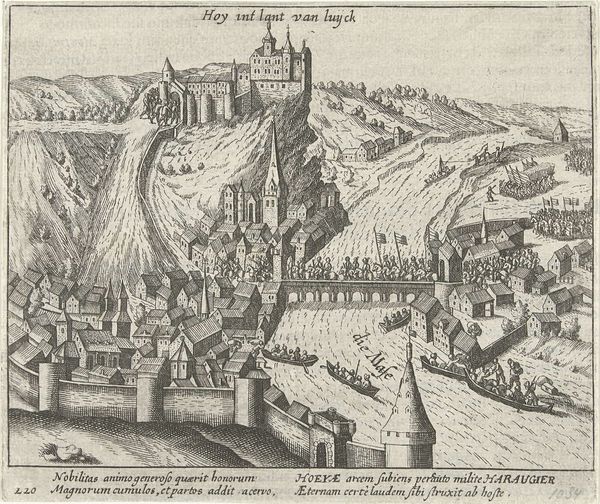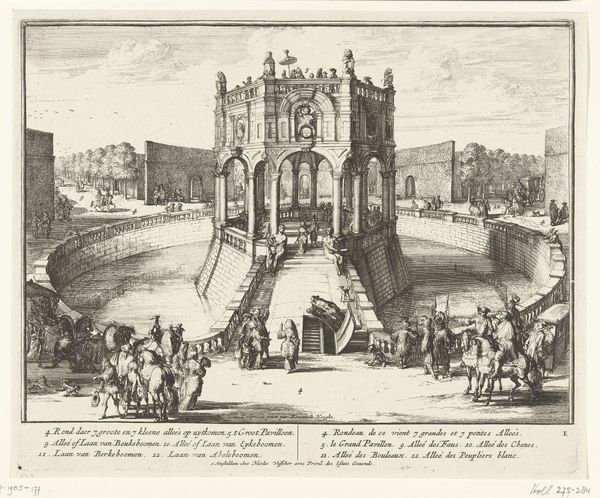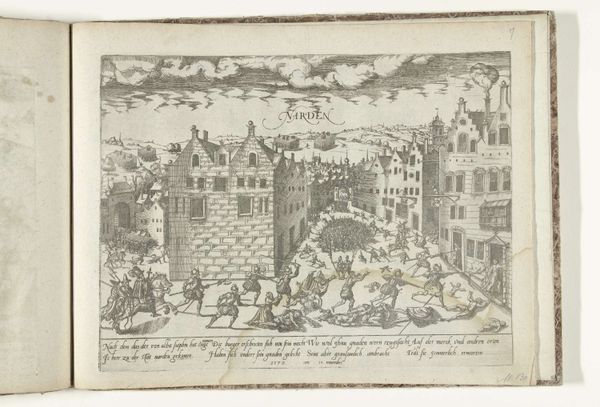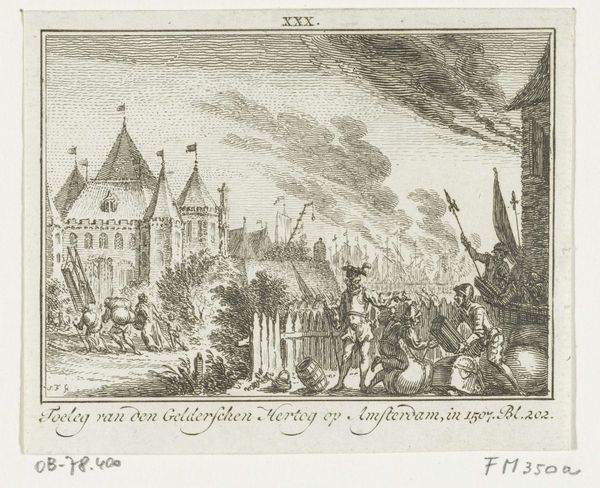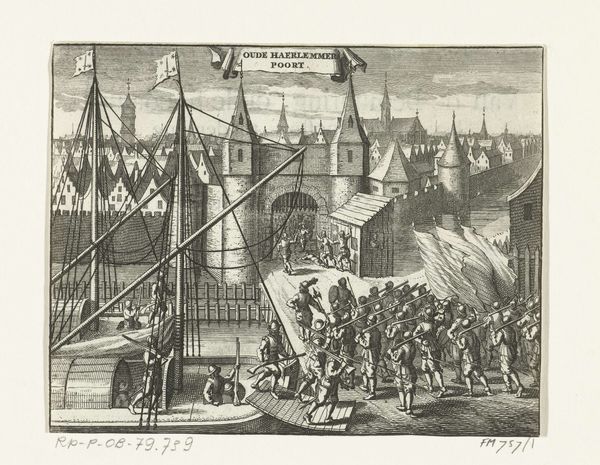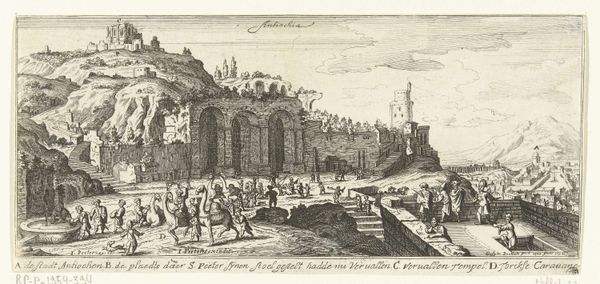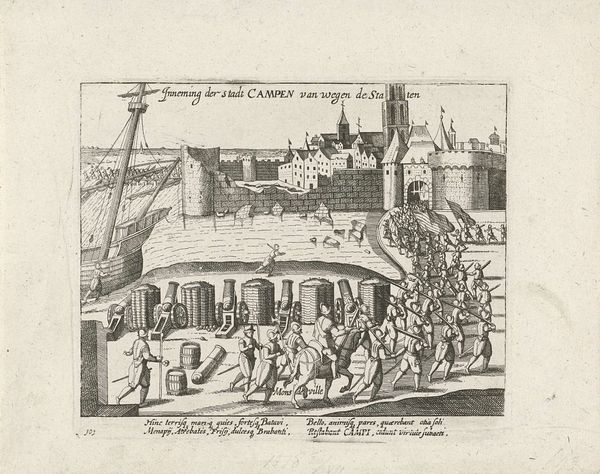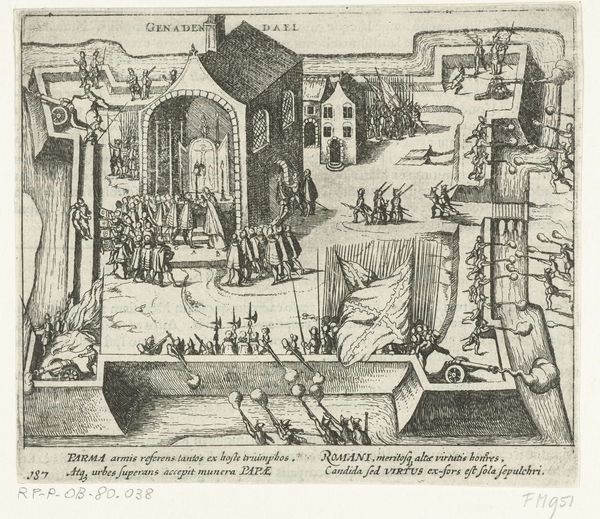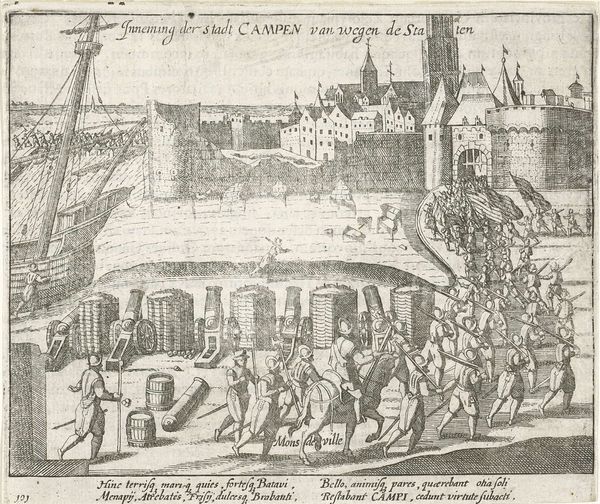
print, engraving
#
baroque
# print
#
old engraving style
#
cityscape
#
history-painting
#
engraving
Dimensions: height 138 mm, width 165 mm
Copyright: Rijks Museum: Open Domain
Editor: Here we have "Entry of Don Juan in Brussels, 1577," a baroque-style engraving from 1613-1615 by an anonymous artist, housed at the Rijksmuseum. It's incredibly detailed for an engraving, depicting a cityscape teeming with people and architectural features. What really jumps out is the artist’s technique in creating depth, with the procession winding through the city. How would you interpret this work? Curator: For me, it's a fascinating record of material culture and its social function. Consider the labor involved in creating this print. Engraving was a skilled craft, a trade learned through apprenticeship. The artist, while anonymous to us, was part of a complex network of workshops and printing houses. We should also note the accessibility prints offered. Unlike paintings commissioned by the wealthy, engravings like this made historical events and political figures accessible to a broader, more diverse audience. Do you think this piece was meant to be purely informational or did it serve another purpose? Editor: Perhaps propaganda? It seems to celebrate Don Juan's entry. Could it also be about solidifying power through visual representation and distribution of prints like this? Curator: Precisely. The engraving isn’t simply a neutral document; it's actively constructing and disseminating a particular narrative. Notice the lines of text. Print wasn't just visual; it brought language into wider circulation. That coupling with the image must have shaped understanding, influencing how the depicted event was received and remembered. I encourage you to look closer. The very act of printing, the production and consumption of this object, reveals so much about the social and political landscape of the time. Editor: That's fascinating! I hadn’t considered the process of dissemination itself as a form of messaging, but it makes perfect sense when we’re looking at social consumption and historical narratives. I appreciate seeing art through the lens of production; I have gained an amazing new perspective to observe prints and their value beyond artistic expression.
Comments
No comments
Be the first to comment and join the conversation on the ultimate creative platform.
